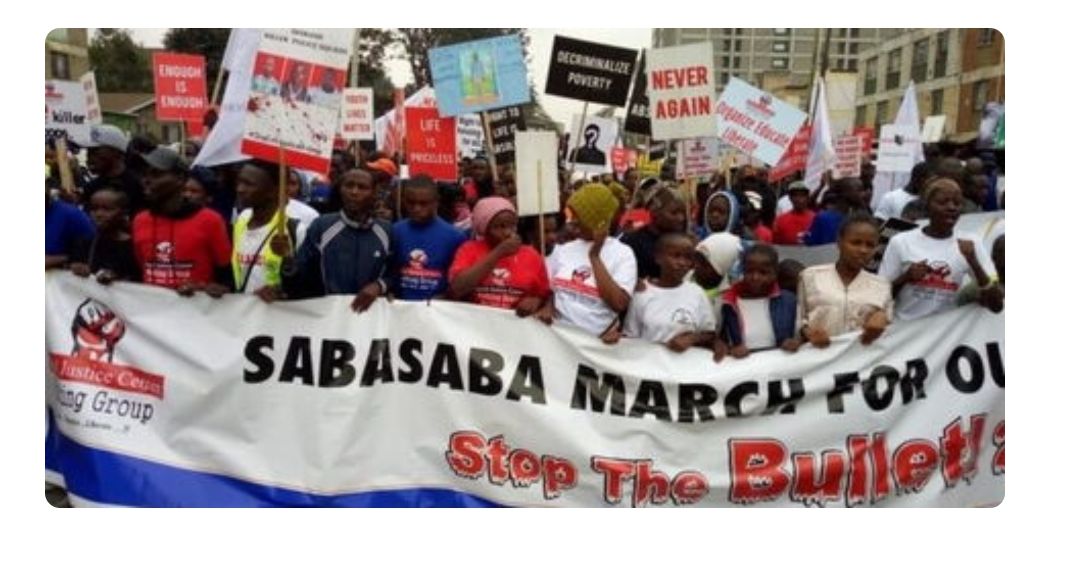Every 7 July, Kenyans lace protest songs with remembrance. What began as one audacious gathering in 1990 has matured into an annual civic ritual part requiem, part rallying cry that keeps expanding its cast of heroes and its list of unfinished demands.
It was a season of one-party rule, when criticizing President Daniel arap Moi’s KANU government could earn you a midnight knock on the door. Yet on 7 July 1990, three veterans of the independence era Kenneth Matiba, Charles Rubia and Jaramogi Oginga Odinga summoned Nairobians to Kamukunji Grounds to insist on multiparty democracy. The state banned the meeting; thousands went anyway. Police fired teargas and live rounds, killing and injuring protesters, then flung the organisers into detention without trial. The brutality only amplified the slogan “Saba Saba”—seven-seven—until it lodged in the national vocabulary.
As Moi dug in, younger figures stepped forward. Lawyer-activist James Orengo criss-crossed campuses preaching civil liberties; he too was locked up. Koigi wa Wamwere denounced state torture and paid with more jail time. Environmentalist Wangari Maathai linked democracy to land and forest rights, mobilising women in bold street actions that foreshadowed her 2004 Nobel Peace Prize. By decade’s end, Raila Odinga fresh from earlier treason charges and detention was on the campaign trail, turning Saba Saba commemorations into platforms against fraudulent elections.
The fall of KANU in 2002 did not retire Saba Saba. Wangari Maathai marched again in 2003, this time for environmental justice under the new Kibaki administration. Paul Muite urged a people-driven constitution and later rallied a “No” vote against the 2005 draft. After the 2007-08 post-election violence, rights defender Maina Kiai held candle-lit vigils for the dead, reminding Kenyans that democracy is more than a ballot. When the 2010 Constitution finally arrived, activists like Ndung’u Wainaina and Gladwell Otieno framed it explicitly as the fruit of two decades of Saba Saba pressure.
The 2010s saw social-media-savvy organisers re-energise the date. Photojournalist Boniface Mwangi turned Kamukunji into an art-plus-anger spectacle that skewered corruption and extrajudicial killings. Lawyer Harun Ndubi faced arrest in 2016 for leading anti-police-murder protests. During the COVID-19 lockdowns of 2020, youth leaders such as Boniface Akumu and Gacheke Gachihi marched in Mathare and Kayole against curfews that had morphed into lethal policing.
Economic pain and perceived state excess have drawn fresh crowds. In 2021 Jerotich Seii’s “We are tired” walk threaded through Nairobi’s central avenues demanding equitable budgets. July 2024 saw concerts that eulogised those killed in past protests. As 2025’s anniversary approaches, motorists’ associations, student unions and Gen Z collectives are publishing five-point manifestos on policing, tax justice and youth unemployment, signalling that Saba Saba has evolved from a struggle for multiparty titles to a battleground over how that multiparty state actually serves its people.
Saba Saba persists because its grievances keep mutating: from one-party despotism to stolen votes, from land grabs to spiralling living costs. Each July 7 inherits the memories and the unfinished business of the last, weaving veterans and newcomers into a single thread of public accountability. Three and a half decades on, the Kamukunji spirit refuses to retire, reminding Kenyans that democracy isn’t an event; it is an annual audit, payable in courage



